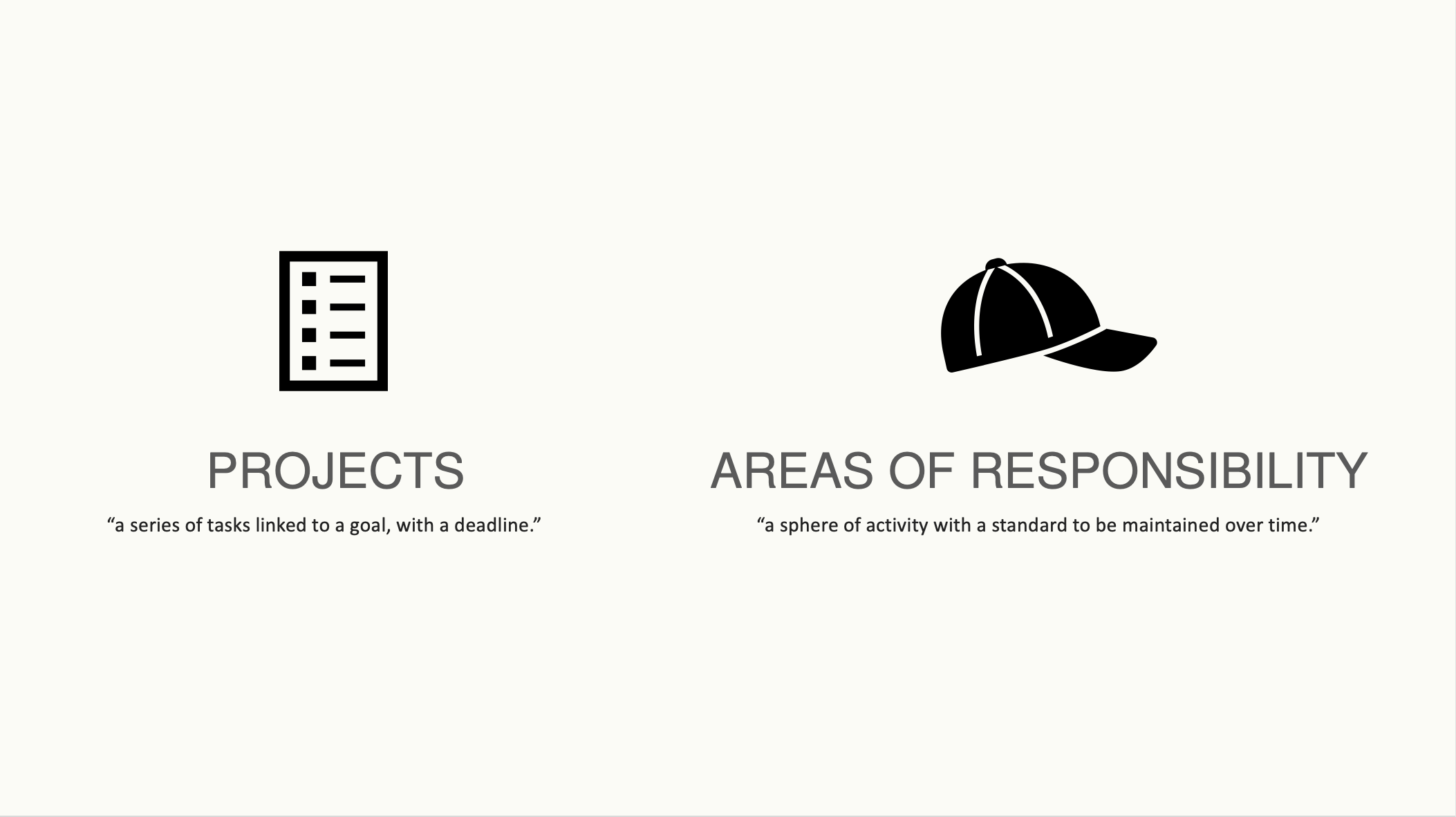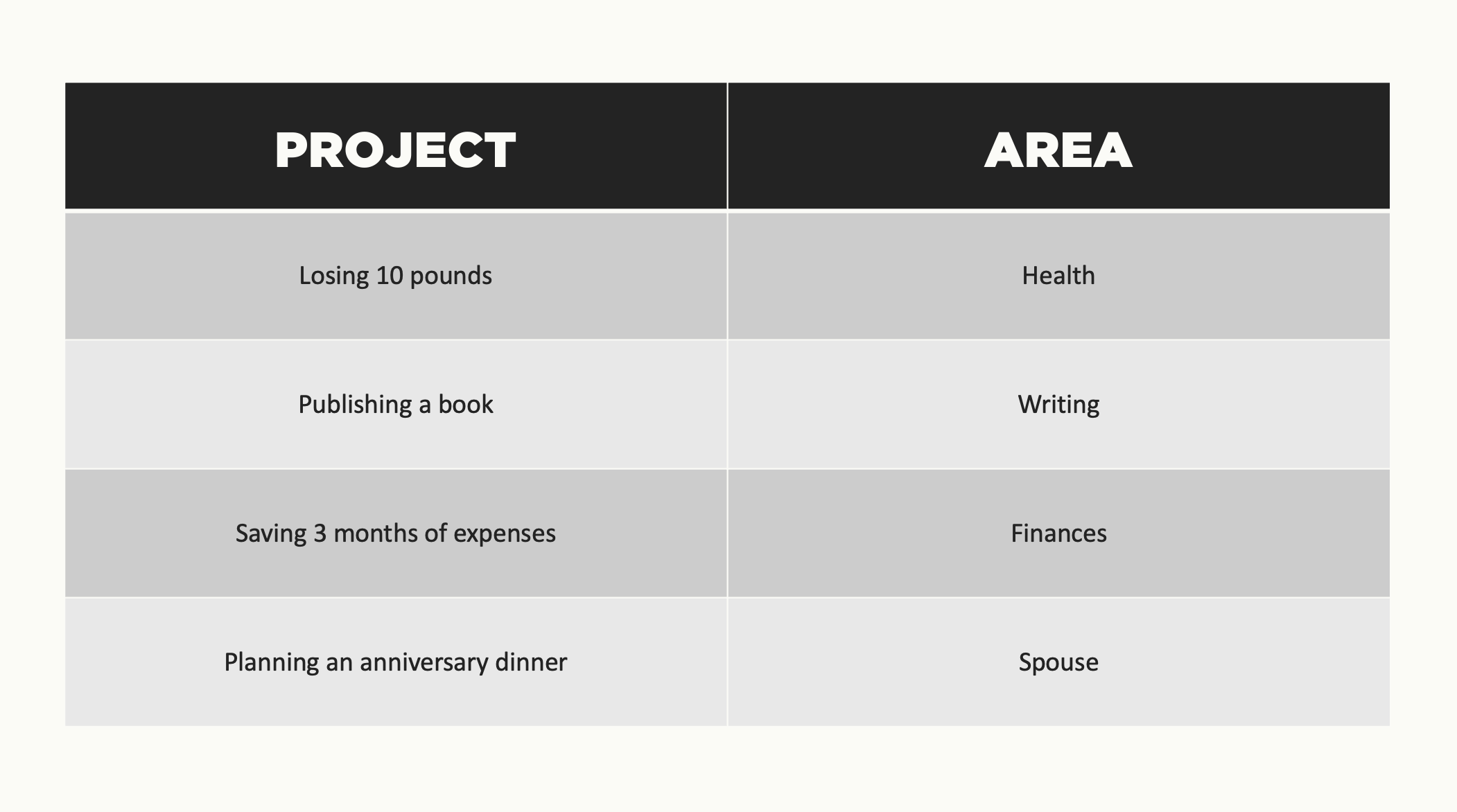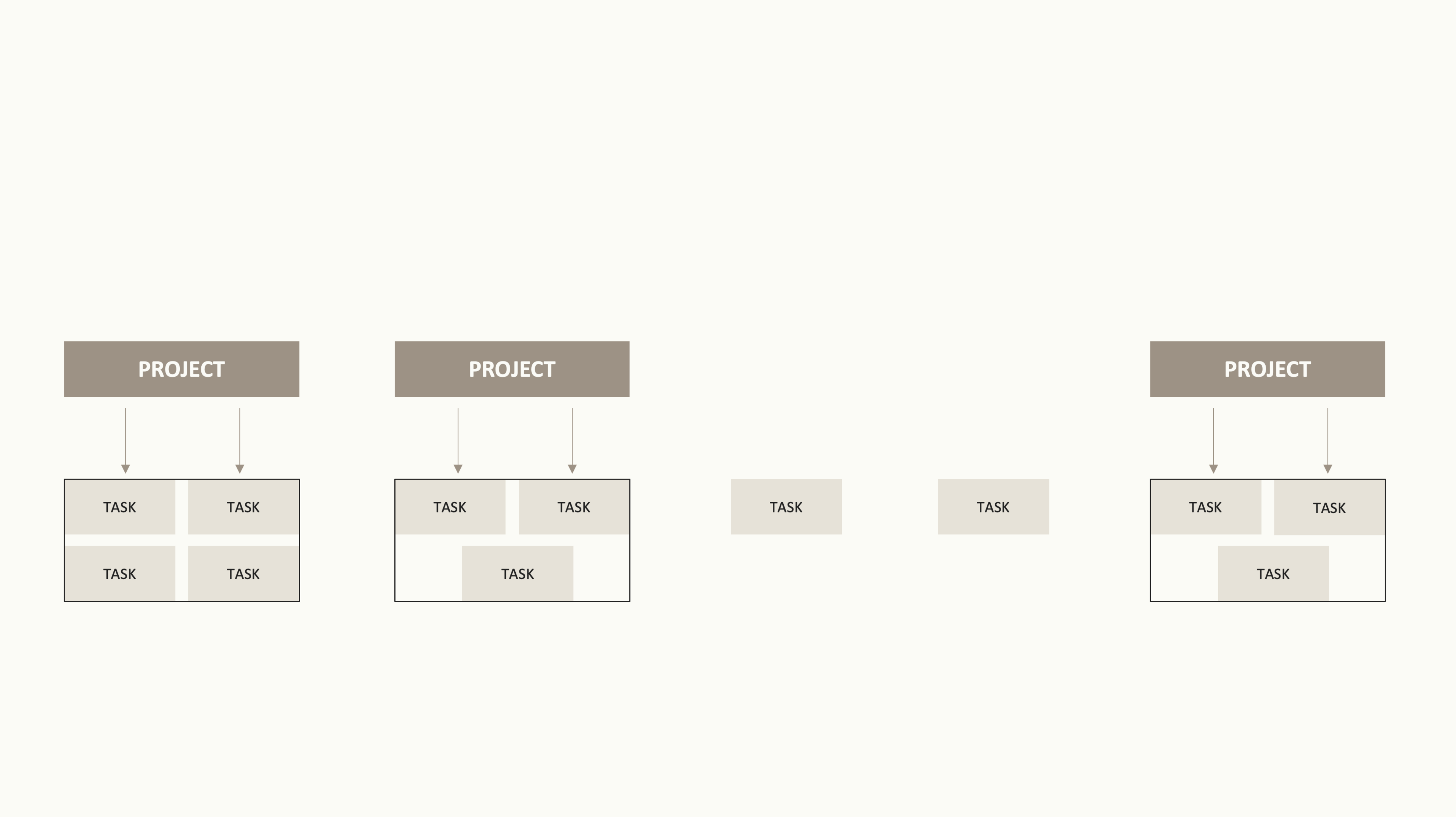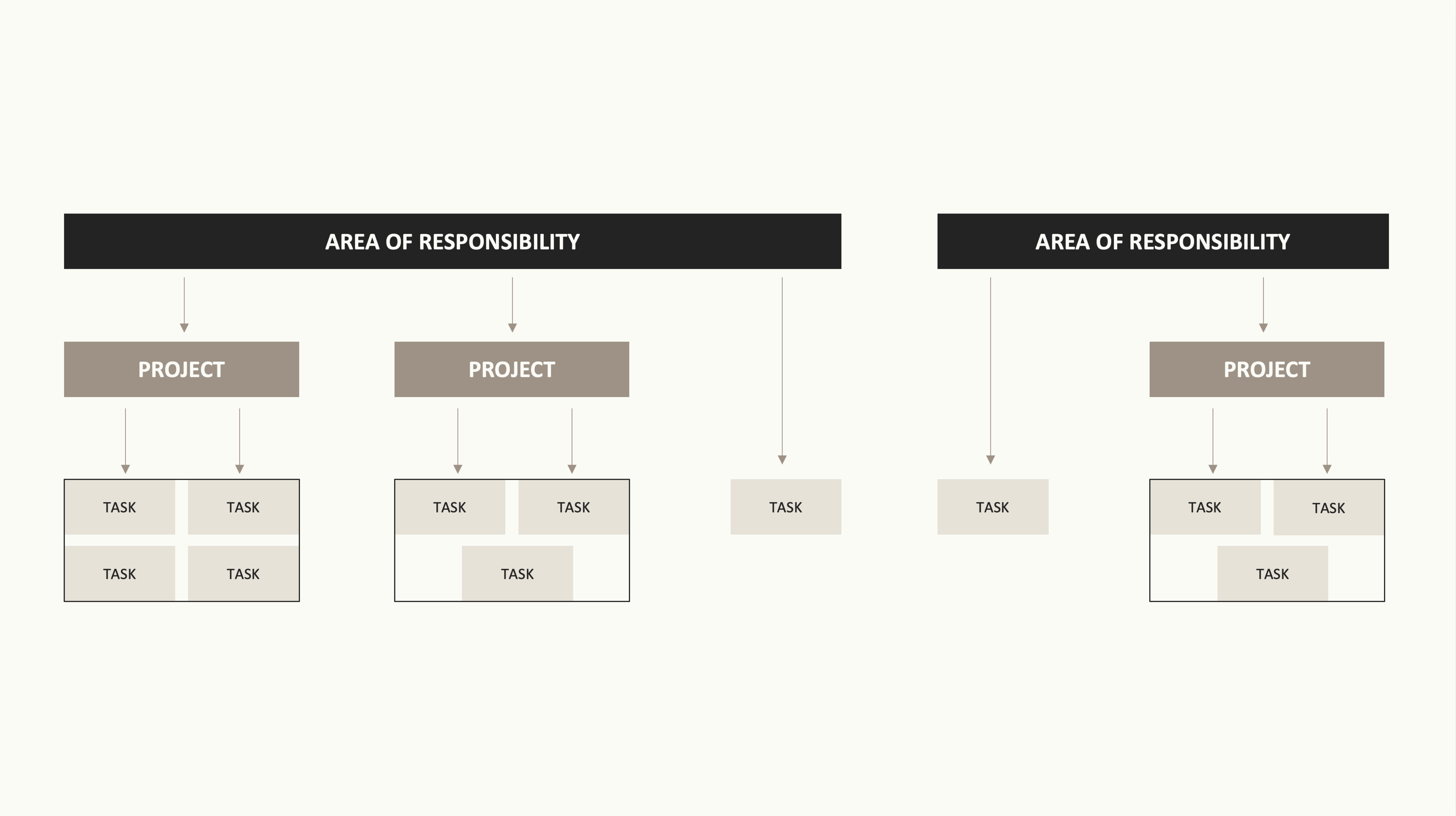CREATE YOUR LIFE AREAS
Do you ever feel like you spend your entire life juggling?
Between family commitments, work, friendships, health, and daily tasks, there are so many demands vying for your attention.
It often feels like the only way to meet all these demands is to frantically juggle them, hoping that nothing important gets dropped.
Let's refer to these responsibilities that we're juggling as "Life Areas."
Things in life that are indefinite in duration and have a standard to be maintained.
What's interesting is that everyone reading this likely has their own set of things they're juggling as well.
There are personal areas in life, as well as professional areas of management.
Both of these spheres have responsibilities that are indefinite in duration and require a standard to be maintained.
PROJECTS AND AREAS ARE DIFFERENT
One thing that can be confusing is the distinction between an area to maintain and a project to complete in our lives.
Areas and projects have different characteristics.
Projects have a timeline with a clear starting and stopping point.
Areas, on the other hand, require ongoing maintenance. You continuously manage them until they are no longer a part of your life.
A TASK. A PROJECT. AN AREA.
In life, we all have tasks and responsibilities that occupy our day.
Imagine if we took all the thoughts in our heads and wrote them down. It might look something like the image below.
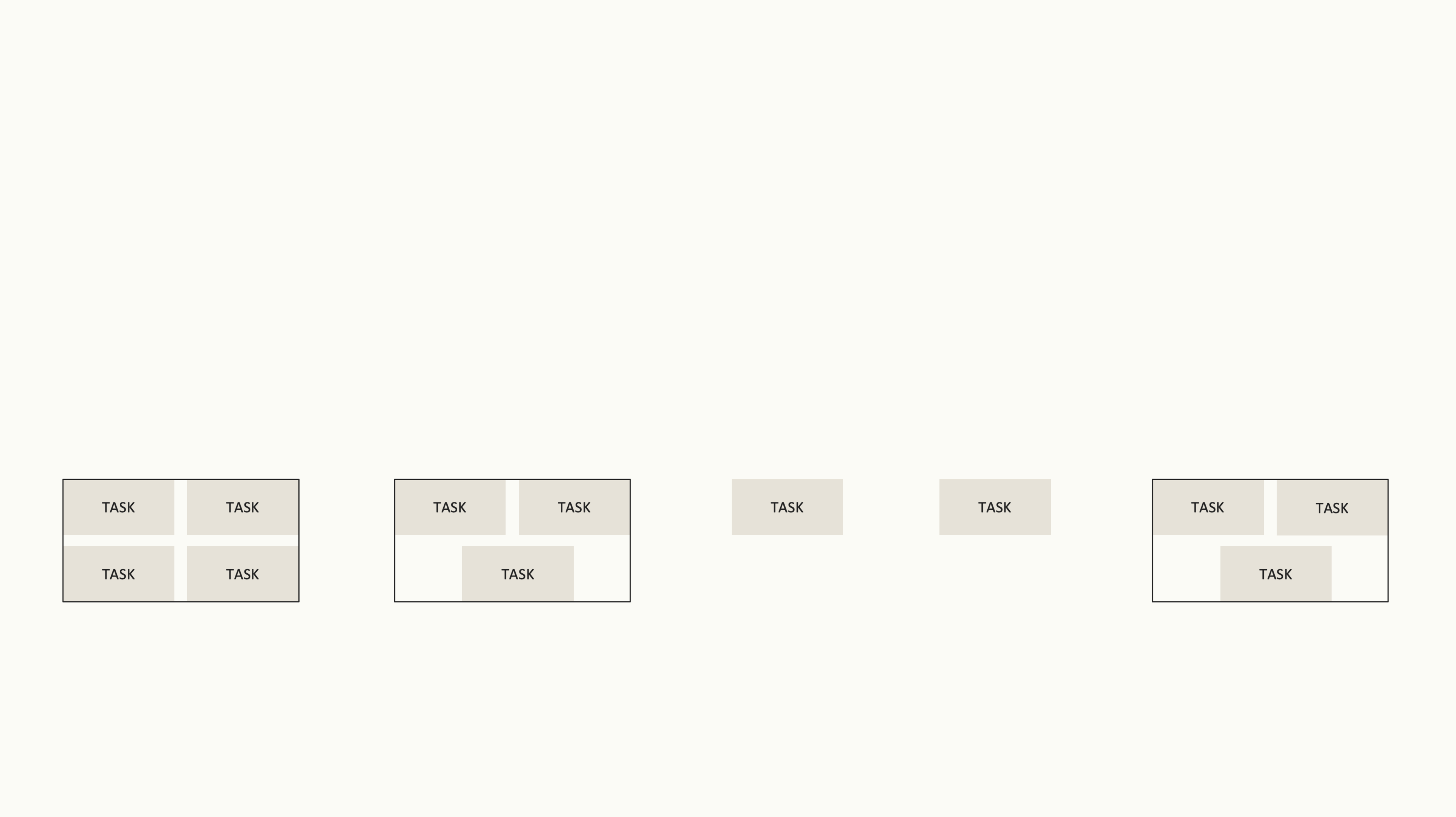
When examining the tasks we have listed, it is evident that some tasks are isolated one-off tasks, while others are better suited to be grouped together.
Projects are a series of tasks linked by an outcome.
Okay great. That makes sense.
But hold on, there’s another layer of organization in our heads that we do.
What do you call a group of projects that are linked together to uphold a standard in your life? Right, a Life Area.
Let's say I have two projects going on:
- Clearing out the shed.
- Creating a garage sale.
These two projects are similar because they fall under the same umbrella, which we can call "HOME."
Areas have standards. For instance, when it comes to my home, I desire a clean, organized, and tidy house. These are the standards I hold. Currently, I may not meet these standards, so what can I do? When I aspire to come closer to my ideal standard, I create projects to close the gap between where I’m at and where I want to be.
Projects consist of a set of tasks.
These are action steps that are directly linked to achieving the desired outcome for your project.
Tasks are the fundamental units of progress. They represent the small steps that lead to any desired outcome in life.
So, what does this mean for you?
If you want to make improvements in any life area, I would start by asking you two questions:
- What is your definition of success? How would you describe winning in the specific life area you are focusing on?
- Next, I would ask you to identify the projects that you need to undertake in order to move closer to your definition of success.
What would you have to do to get where you want to go?
After you identify the key projects, you can break down your projects into bite-sized tasks to create progress.
SETTING THIS UP IN YOUR TASK MANAGER
- In The Art of Execution II: "What Should I Do With The Things That Pop Into My Head," we brain dumped into our inbox without distinguishing between tasks, projects, or areas. We simply wrote down anything that came to mind.
- In The Art of Execution V: "What Specifically Are You Trying To Do," we clarified each item in our inbox.
Now, we need to determine where those items will be stored.
Your inbox functions as a temporary place for you to quickly capture items that come to mind.
After you have dumped items into your inbox, clarify them. Then, you will need to organize the clarified list of tasks into their appropriate categories or locations where they belong.

Here is a photo of my Things 3 app as of January 20th, 2024.
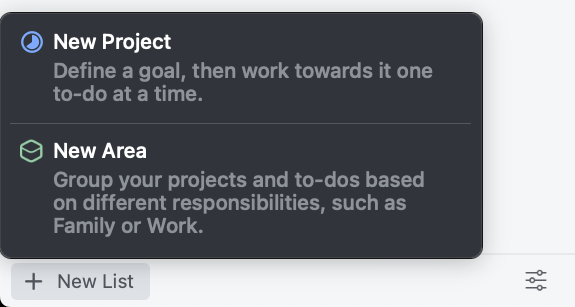
You’ll notice in the bottom left hand corner you can add a new list.
Do you want to create a Project?
Do you want to create an Area?
These are the two types of lists we want to create on the left-hand side menu to structure our to-dos in life.
ACTION STEPS
I would recommend to start, listing out all of your areas of life that you give a darn about.
You can see on mine I have:
You can see on mine I have:
- Self Care
- Marriage
- Parenting
- Home
- Spiritual / Emotional health
- Friendships
- And the companies I own
In your Resource Manager, which is often referred to as a notes app, take some time to define what winning means to you in this particular area. What is your definition of success?
Once you have identified the gaps between your current state and where you want to be, design projects that will help close those gaps.
Create the necessary "Projects" in your Task Manager.
You may notice that I have set up another Area called "projects". This setup differs slightly from most people's Things 3 configurations. I learned this approach from Tiago Forte. I prefer to have a single place where all my projects reside.
This allows me to triage all my projects by importance, with the most critical ones at the top and the least important ones at the bottom.
In Things 3, I only keep projects that I plan to complete within the current month. This ensures that the list remains manageable and achievable.
For projects that are not planned for this month, I maintain a Someday/Maybe List and refer back to it during my monthly reviews.
TOMORROW’S POST
In tomorrows post, we’re ready to get to Inbox zero.
You’ve gotten everything out of your head.
You’ve clarified the lists.
And now you have a framework where every action item can have a home.
See you tomorrow,
Hunter
OH, ONE MORE THING…
Let's return to the juggling metaphor.
Once, I heard a commencement speech from Brian Dyson, former CEO of Coca-Cola Enterprises, where he talked about our daily commitments:
Imagine life as a game where you juggle five balls in the air.
These balls represent work, family, health, friends, and spirit. You keep all of them in the air. However, you will soon realize that work is like a rubber ball. If you drop it, it will bounce back. But the other four balls - family, health, friends, and spirit - are made of glass. If you drop any of these, they will be permanently scuffed, marked, nicked, damaged, or even shattered. They can never be the same again.
In life, we are constantly juggling. We have our own standards that we try to maintain. However, we need to understand that not all the balls we juggle are made of rubber; some are made of glass.
When deciding what to prioritize, we must determine which balls are made of rubber and which are made of glass that cannot be dropped in this season.
In the pursuit of holistic health, ask yourself what needs to be prioritized above all else.
What rubber balls can I put on maintenance mode so that I can focus all my attention on the glass balls that are at risk of being dropped?
This is the juggling act that holistic health requires.

